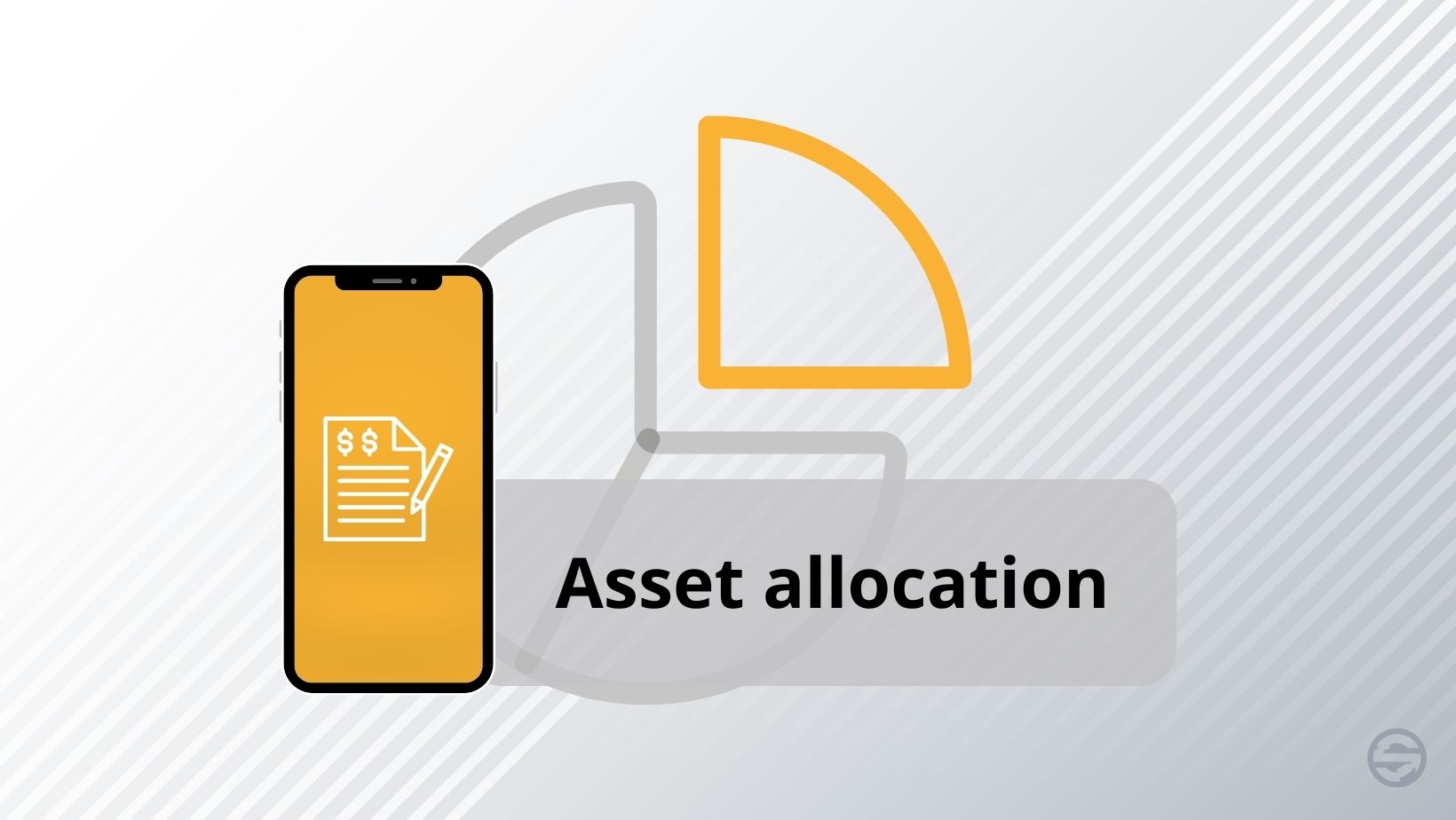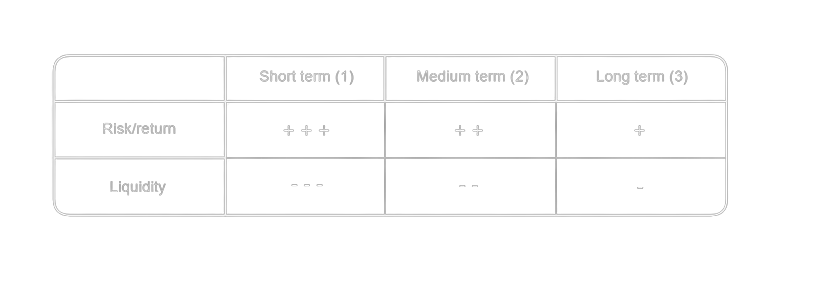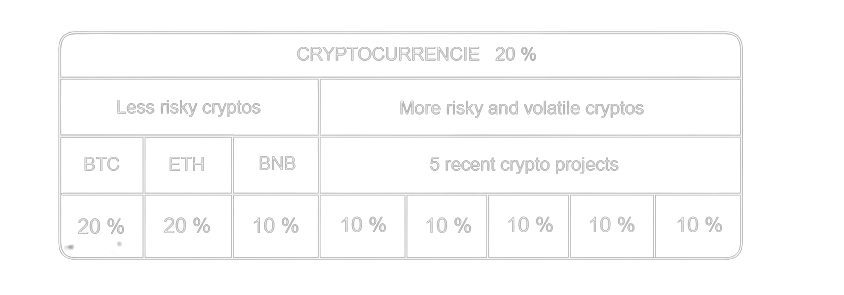
Table of contents
Allocation or diversification ?
Wealth allocation and diversification are two different concepts. However, while they are different concepts, the two are implicitly linked. The allocation, often expressed as a percentage, will be done more according to a trading or investment strategy that takes into account the notion of risk within the portfolio. Diversification consists in investing one's capital in different investment sectors, but also in investment sectors of different regions of the globe. In other words, diversification follows the adage 'don't put all your eggs in one basket'. Diversifying your portfolio will not happen without implementing a good allocation strategy.
The allocation consists in asking the question: ’how am I going to set up this diversification?’. It depends on different factors. The allocation may change over time due, for example, to market behavior, socio-economic conditions or personal needs, etc. It is therefore also possible that part of your allocation must be subject to reallocations if certain data has changed. The allocation must always have a meaning and must respect a certain balance. Indeed, if an allocation takes up too much space in the portfolio, it is recommended to carry out a reallocation in order to always tend towards a balanced portfolio. For example, if our crypto allocation becomes too heavy, we can reallocate part of the portfolio into a stablecoin allocation. But still, if our equity portfolio becomes too large, it is possible to rebalance the portfolio by allocating part of the equity allocation to a less volatile allocation such as precious metals or bonds.
Allocation and its reasoning
If the concept of allocation seems simple, in practice, it is not always easy to allocate one's assets in such a way that it achieves a balance. Indeed, and as mentioned above, the allocation depends on a series of factors, often beyond the control of the investor. This is why it is important to develop a strategy related to your allocation by following the few key elements that follow.
1. Determine supports
Depending on one's means, the notion of feasibility can quickly take on a relative character as an investor. The question to ask is ’what can I do today?’.
At first, it is recommended to give your time, your attention and your means in the things that you know best. Good knowledge developed in a field will allow you to better manage your portfolio. However, limiting yourself to a particular area can lead to overinvestment. If the latter can be beneficial to the yield, it can also reduce it. Overinvestment therefore increases the risk/reward ratio of your allocation and can endanger the balance of your portfolio.
Secondly, it is therefore recommended to take an interest in other asset classes and learn more about them, if we find that part of our allocation is becoming too heavy. This will not only contribute to better portfolio diversification, but also reduce risk and increase our knowledge in different areas.
2. Determine allocation criteria
The allocation takes into account the timescale:
- short term
- medium term
- long term.
In your allocation, diversification takes into account several criteria such as:
- the different asset classes (equities, crypto, commodities, etc.) susceptible to be invested
- the location of these assets (Europe, USA, Asia, Emerging Countries, etc.)
- if they are movable or immovable assets.
3. Respect your available cash
It should be noted that whatever the strategy for allocating one's assets, there is a golden rule: the available cash must always correspond to a minimum of 10% of one's total assets. Free cash means cash that can be had quickly. It can also mean that in this 10% of available cash, a part is invested in short-term trading. Indeed, it is very easy to quickly recover your money from a trading platform, unlike a real estate investment which does not constitute a source of cash available quickly. Having cash available is essential to deal with any type of contingency.
4. Determine the notion of risk/return as well as the liquidity of your investments
The notion of risk and return is very important and diverges according to its investment strategy. First, the notion of risk/return depends on the time factor, whether it is a short-term, medium- or long-term investment. It also depends on the asset class in which the investor wishes to invest part of his assets. The risk/return also depends on the liquidity that a particular return represents.
Liquidity represents cash flow and readily available cash. Cash flow is money in currency in an account and/or in stablecoin on an exchange for cryptocurrencies. Remember that quickly available cash is money (currency or stablecoin) which represents 10% of the portfolio's allocation or part of this 10% in trading or short-term investment.
Let's take the example of a portfolio whose diversification includes the following allocations:

The table above shows us that when the risk/return is high, the available liquidity is reduced. This may, for example, be the case for the portfolio of a short-term cryptocurrency trader. On the other hand, when the risk/return is low, the available liquidity is greater. For example, the case of a long-term investor in low-volatility assets such as precious metals (gold or silver).
As a result, the risk taken may be offset by the available liquidity. This also allows us to better understand the role of the long-term portfolio (3). Indeed, the long-term portfolio must be understood philosophically, this means that it is a "retirement" portfolio (5, 10, 20 or 50 years) in which we will never draw despite an incident. , an economic crisis, or even a personal contingency. We will see later that it is sometimes necessary to modify your strategy and by extension your allocations, but that does not mean breaking your portfolio.
The short-term portfolio (1) meanwhile is a portfolio in which the notion of time is essential. Indeed, while short-term positions are more risky from a return point of view, they are less risky from a time point of view. The short-term portfolio is a portfolio that remains exposed to the market for a very short time. In addition, it is recommended to trade only 0.25% to 1% maximum of its capital. Capital is always more important than performance and therefore return. Warning: you never risk your entire capital in trading.
What about the medium-term portfolio (2) ? The medium-term portfolio includes swing trading positions. These are positions that can range from one week to several weeks, or even several months. The objective of this portfolio is neither more nor less to take its share of the cake on the markets.
The objective of the trader/investor is to find the balance between these three investment strategies.
Portfolio Allocation Example
Our example includes a portfolio allocation split between 3 asset classes: 30% in derivatives, 20% in cryptocurrencies and 50% in transferable securities.

At this stage, we have already been able to diversify our portfolio by allocating cash to diversified and more or less risky assets. However, this remains too general to make good allocation decisions and to effectively measure the risk/return ratio. Sub-allocations should therefore be made.
To continue the example, we will make sub-allocations of allocated cash in cryptocurrencies. Unless you are a maximalist, in principle, this 20% is not invested in a single cryptocurrency. We will see here that it is possible to further balance the risk/return ratio of the allocation of our portfolio via sub-allocations. We could therefore imagine putting 50% of the crypto portfolio in 3 well-known cryptocurrencies that are little or less risky than other cryptocurrency assets: 20% in Bitcoin, 20% in Ether (Ethereum) and 10% in BNB ( Binance). There is therefore 50% left to under-allocate. We want to expose this remaining 50% to younger and more volatile cryptocurrencies like Matic. Here again, instead of investing 50% of the crypto portfolio in a single cryptocurrency, it is recommended to, for example, divide this 50% into 5 allocations of 10%. This further reduces your risk. As a reminder, the conservation of capital takes precedence over the return. Once these sub-allocations have been made, the cryptocurrency portfolio looks like this:

By following this reasoning of under allocations, we find that we are more exposed to the return while measuring the risk. We have applied this reasoning to the cryptocurrency portfolio, but it can also be applied to other asset classes such as the movable portfolio, half of which would be invested in less risky indices (CAC40 and DAX30 for example) and for the other half in several riskier stocks from Emerging countries.
Finally, it is essential to regularly measure the size of the sub-allocations of its portfolios. Indeed, these must never exceed a certain percentage of the general allocation which directly influences the available cash and by extension on all of our assets:
5% (under allocation) of 20% (10% allocation (cash available)) = x
Once this reasoning is acquired and the results are visible, it suffices to repeat the reasoning.
Apply market sentiment
As seen above, our allocations depend on different factors. Experience in trading and investing will allow the trader to develop knowledge and thus better appreciate market sentiment.
Applying market sentiment to your trading or investment strategy allows you to better control your portfolio. A good trader will in principle be able to assess whether the market is increasingly overvalued. Faced with a feeling of uncertainty, he will have to make certain changes to his portfolio to reduce his risk by being less exposed to the market. As soon as the operator believes that the market is becoming less and less valued, but that these fundamentals are still good, he will gain more exposure to the market.
Tracking
Tracking your portfolio is an essential element for any trader/investor. It is very complicated for an operator to accurately retain all the assets invested, their entry price, the average price or even all the profits or losses realized or not. Tracking makes it possible to make better decisions in relation to its allocations. It is therefore recommended to bring un management document. Without tracking and a clear vision of your portfolio, it is very complex to make the right decisions about your allocations and therefore to properly diversify your portfolio.
Conclusion
We have seen the notions of allocation and diversification. Then, we presented the reasoning to be applied to its allocation, in particular via the identification of the supports, the criteria linked to the allocation, the notion of risk/return and liquidity. We ended with two key elements of good management of son allocation: the application of market sentiment and tracking.
If the notion of allocation allows you to have a clear vision of your investments and to measure the risks as well as the benefits of an allocation, it also allows the portfolio to compensate for the loss of an allocation with another allocation.
To go further, do not hesitate to read our article on How to DYOR in 5 easy steps?
Disclaimer : This is not financial advice. The purpose of the site is to inform readers. Any type of investment involves risk. Do your due diligence and do your own research on the projects featured on the site. Act as a good father and do not invest more than your objectives or financial means allow you. In this regard, read our page: Warning about virtual currencies.
Some articles on the site contain affiliate links, and using them to register from the site allows the development of the site by collecting commissions. By doing so, you also make yourself eligible for a welcome bonus such as a voucher or fee reduction, for example.



 Investment
Investment 2023-01-18
2023-01-18
